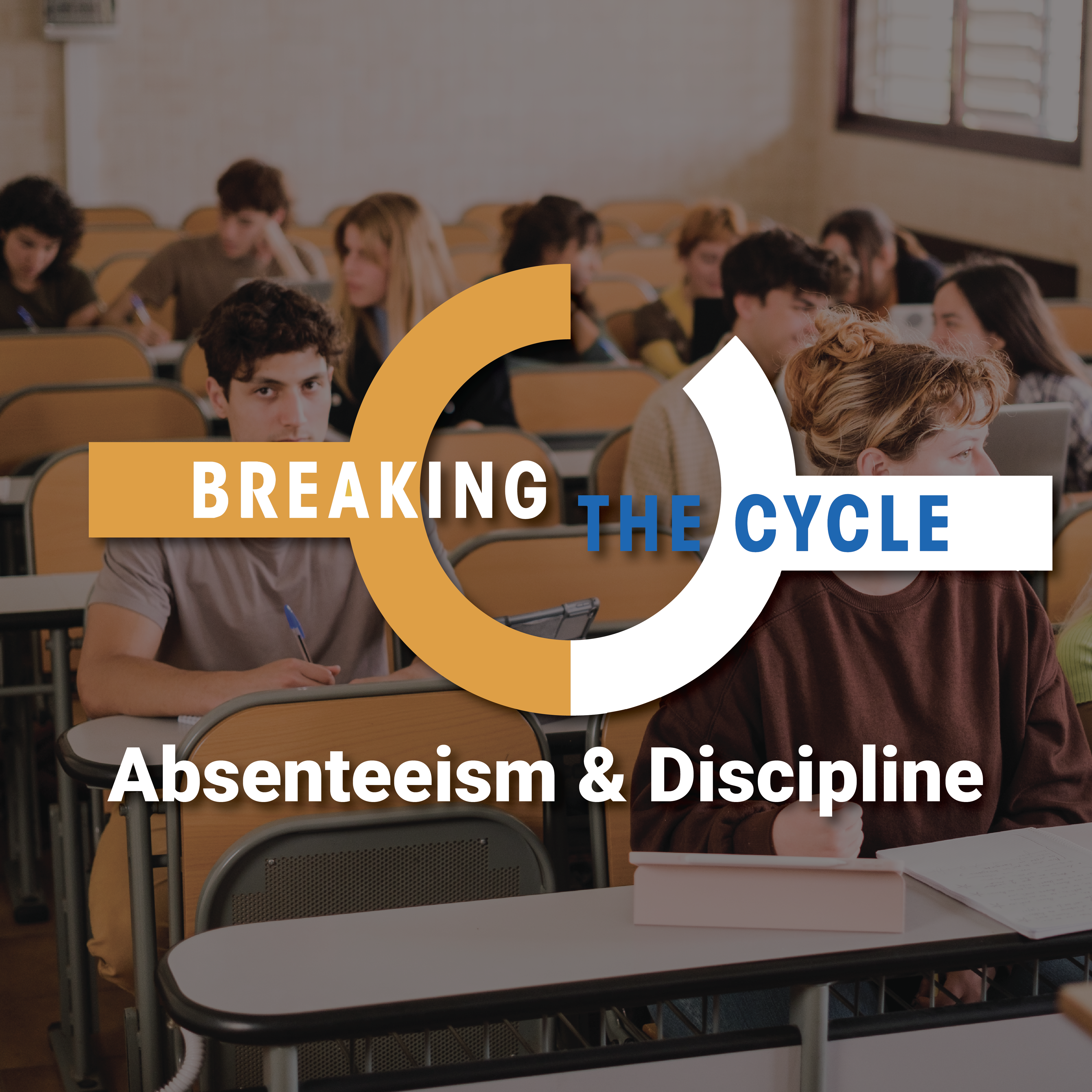
Chronic Absenteeism Soars to 26%- What's Behind the Spike?
School Chronic Absenteeism: A Growing Concern As summer unfolds and U.S. schools enjoy a well-deserved break after the 2023-2024 academic year,...
5 min read
 SchoolTool
Dec 3, 2024 10:08:32 AM
SchoolTool
Dec 3, 2024 10:08:32 AM

As the 2024–2025 school year unfolds, educators are grappling with the ongoing challenge of keeping students engaged and in the classroom. Chronic absenteeism and disciplinary issues don’t just coexist—they fuel one another, creating a cycle that is difficult to break.
In our summer blog post, "Chronic Absenteeism Soars to 26%—What's Behind the Spike?”, we discussed how chronic absenteeism reached unprecedented levels, with rates soaring as high as 26%, according to the American Enterprise Institute. Factors like economic stress, limited access to resources, mental health challenges, and heightened discipline problems contribute to this surge.
Building on that discussion, it becomes clear that absenteeism and disciplinary issues are deeply interconnected, each exacerbating the other. To break this cycle, schools must first understand how these factors interact. This post takes a closer look at the relationship between absenteeism and discipline and explores strategies to address these intertwined challenges.
Chronic absenteeism—defined as missing 10% or more of school days in a year—has been rising steadily, particularly after the COVID-19 pandemic. A 2022 National Center for Education Statistics (NCES) report revealed that 72% of public schools saw an increase in chronic absenteeism during the 2021–22 school year.
Absenteeism is not just a symptom of broader issues; it actively contributes to academic struggles and behavioral challenges. Students who frequently miss school often struggle to reintegrate into the classroom environment, leading to frustration and behavioral issues that perpetuate further absenteeism.
The COVID-19 pandemic has had a profound impact on students' socioemotional and behavioral development, which in turn has affected absenteeism and discipline. Key findings from the National Center for Education Statistics (NCES) illustrate the depth of these challenges:
This developmental toll has manifested in a surge of behavioral issues, including:
These issues contribute to a damaging cycle: students disengaged due to socioemotional challenges are more likely to miss school and face punitive measures when they return, perpetuating absenteeism and disciplinary actions.
According to the 2022 School Pulse Panel (NCES), more than 8 in 10 public schools have seen stunted behavioral and socioemotional development in their students because of the COVID-19 pandemic.
Minor offenses like tardiness and classroom disruptions have risen, further exacerbating the cycle of absenteeism and discipline. Addressing these behavioral changes through restorative and supportive approaches is critical to breaking this pattern and keeping students engaged.
NCES data reveal that the negative effects of the pandemic on student behavior are consistent across the U.S., regardless of region or school setting:


In New York State, research into school discipline practices has revealed significant disparities, prompting the NYSED Office of Student Support Services and its Safe Schools Task Force (SSTF) to investigate the systemic inequities underlying these issues. Here are some of the findings from the Safe Schools Task Force’s investigation into disparities in school discipline practices:
The Civil Rights Data Collection (CRDC) underscores these disparities, pointing to the urgent need for reform. Recommendations include:
Several factors intensify the interplay between absenteeism and disciplinary issues:
Exclusionary practices, such as suspensions, compound absenteeism and behavioral challenges. Disproportionately affecting students of color and students with disabilities, these practices lead to long-term consequences, including:
A report by the New York State Education Department (NYSED), Recommendations for Reducing Disparities in and Reforming School Discipline in New York State, highlights that students who are suspended are significantly more likely to experience chronic absenteeism, making re-engagement and academic success even more difficult.
To combat these issues, the NYSED report recommends equitable and restorative approaches that focus on keeping students in school and addressing the underlying causes of misbehavior.
Restorative practices emphasize accountability, connection, and addressing the root causes of misbehavior. By integrating mental health resources and promoting social-emotional learning, these approaches directly address the drivers of absenteeism and behavioral challenges.
These practices help:
By shifting the focus from punishment to understanding and growth, restorative practices can disrupt the absenteeism-discipline cycle.
Starting in the 2025-26 school year, New York State will introduce a new attendance measurement system as part of proposed amendments to the accountability section of the state's Every Student Succeeds Act (ESSA) Plan. Under these amendments, students will be assigned to one of four attendance "performance levels" based on the percentage of school days they attend:
Level 1: 85% or less
Level 2: 85.1% to 90%
Level 3: 90.1% to 95%
Level 4: 95% or more
Importantly, under the new rules, suspensions and extended medical absences will not count as absences. This approach aims to provide a more accurate picture of student attendance by distinguishing between absences due to discipline and those due to genuine health issues.
By differentiating these factors, the new system is expected to help schools address attendance issues more effectively and reduce the negative impact of disciplinary measures on students’ overall attendance records. This nuanced view of attendance can lead to:
Reduced Disciplinary Bias: Schools may be less inclined to use punitive measures that contribute to absenteeism if these measures do not adversely affect attendance metrics.
Better Support for At-Risk Students: By capturing a wider range of attendance patterns, schools can identify students at risk of both chronic absenteeism and disciplinary issues earlier. This allows for targeted interventions that address both problems concurrently.
Improved School Environment: With a clearer understanding of attendance patterns, schools can develop more supportive strategies that foster a positive learning environment, potentially reducing the need for exclusionary discipline.
Experts believe that these changes will ultimately improve the overall school environment and support student success by addressing both absenteeism and associated disciplinary problems more effectively.
To break the cycle of absenteeism and disciplinary issues, schools can consider several strategies:
Early Identification and Intervention: Identifying at-risk students early and addressing the root causes of absenteeism can prevent it from becoming chronic. Tools like SchoolTool’s Early Warning Dashboard can help schools' pinpoint students who need extra support before problems escalate.
Positive Behavior Interventions: Implementing Positive Behavior Interventions and Supports (PBIS) can help create a more inclusive and supportive school environment. Schools that adopt PBIS have reported reductions in both absenteeism and disciplinary incidents. For example, a high school implementing PBIS saw a 35% reduction in office discipline referrals and a 28% decrease in in-school suspensions within the first year.
Parental Engagement and Communication: Enhancing communication with families can also play a key role. The Greater Johnstown School District, for example, uses informative letters to engage parents about the impacts of absenteeism, which has helped reduce chronic absenteeism rates.
The Institute of Education Sciences (IES) suggests using text messaging as a cost-effective strategy to improve parental involvement and reduce absenteeism. Tools like SchoolTool’s integration with ParentSquare can automate this communication, sending personalized alerts and reminders to keep families informed and involved.
To effectively address absenteeism and disciplinary issues, schools can leverage data-driven tools like Mindex's Advanced Analytics. These dashboards provide valuable insights into student attendance and behavior, enabling targeted interventions:
Discipline Dashboard: Helps schools keep track of disciplinary incidents, identify patterns, and assess the impact of behavior interventions.
.gif?width=1200&height=628&name=Dashboard%20GIF%20(2).gif)
Early Warning Dashboard: Integrates data on attendance, behavior, and academic performance to identify students who might be falling behind, allowing for early and targeted support.
Absenteeism Dashboard: Tracks attendance patterns, identifies students at risk of chronic absenteeism, and monitors the effectiveness of interventions.
By utilizing these dashboards, schools can create a more supportive and responsive environment, ultimately reducing absenteeism and disciplinary issues.
Chronic absenteeism and disciplinary issues are deeply interconnected, presenting a challenging cycle. By understanding and addressing the underlying causes of absenteeism, schools can enhance the educational experience for all students. Utilizing data-driven tools and evidence-based strategies will help schools effectively tackle these issues. At SchoolTool, we’re committed to partnering with you to find solutions and support your students’ success.

SCRIC (South Central Regional Information Center) supports 49 districts serving more than 47,000 students across New York State. When third-party...

As a K–12 leader, you know that data is at the heart of student success, guiding everything from classroom strategies to districtwide...

School Chronic Absenteeism: A Growing Concern As summer unfolds and U.S. schools enjoy a well-deserved break after the 2023-2024 academic year,...

AWS re:Invent isn’t just a conference—it’s the global gathering for cloud computing professionals to learn, innovate, and connect. This year, Mindex...

ParentSquare Partners with Mindex (SchoolTool) to Bring Seamless Communication and Family Engagement to New York School Districts